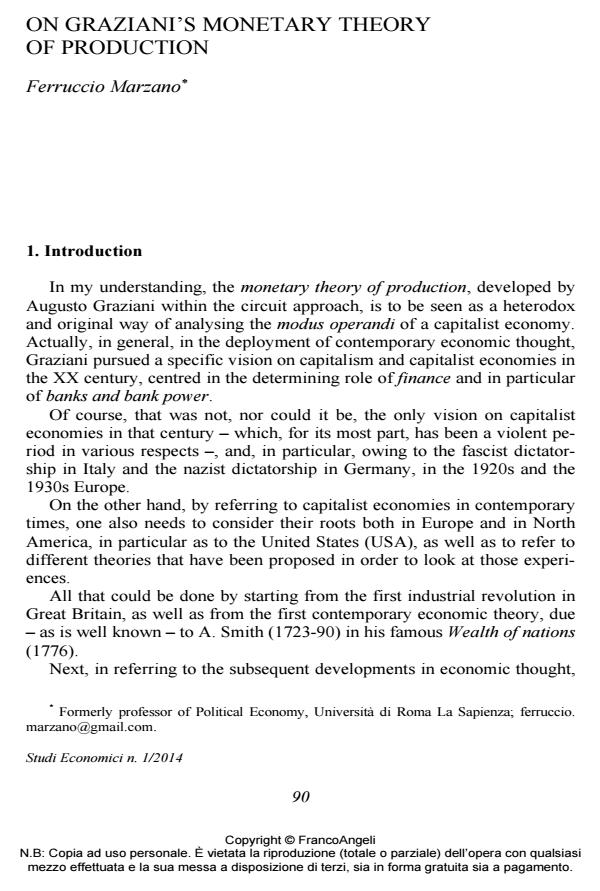On Graziani’s monetary theory of production
Journal title STUDI ECONOMICI
Author/s Ferruccio Marzano
Publishing Year 2015 Issue 2014/112
Language English Pages 8 P. 90-97 File size 33 KB
DOI 10.3280/STE2014-112007
DOI is like a bar code for intellectual property: to have more infomation
click here
Below, you can see the article first page
If you want to buy this article in PDF format, you can do it, following the instructions to buy download credits

FrancoAngeli is member of Publishers International Linking Association, Inc (PILA), a not-for-profit association which run the CrossRef service enabling links to and from online scholarly content.
In the paper it is underlined that, building on previous German and French literature, in various outstanding contributions Graziani analyses the working of a credit capitalist economy, that is an economy in which banks’ decisions on the amount of credit provided to firms are the starting point in the functioning of the economy. In particular, in Graziani’s vision, the power of banks and that of firms conflict each other, whereas the role of workers is a residual one.
Keywords: Monetary theory, circuit approach, banks’ credit.
Jel codes: B31, E51
Ferruccio Marzano, On Graziani’s monetary theory of production in "STUDI ECONOMICI " 112/2014, pp 90-97, DOI: 10.3280/STE2014-112007